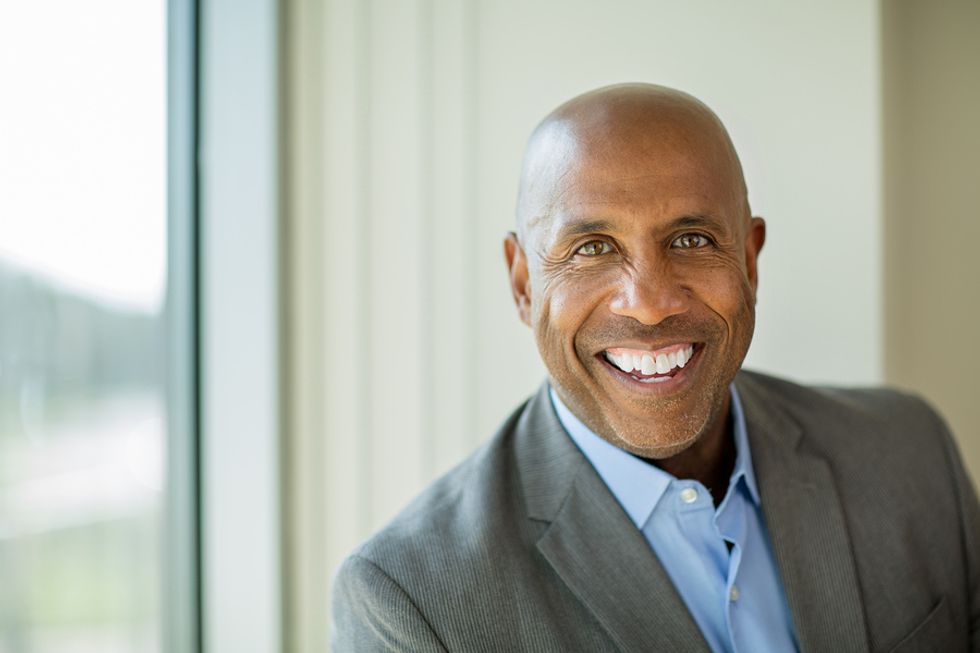
by Admin
How To Prepare Your Social Media For The Job Search
You’ve identified an amazing job opportunity and decided to apply for it. Your resume has been updated, and the cover letter is written; everything seems to be in order. Wait! Are you forgetting something? Depending on how active you are on social media, you may […]
Career development
by Admin
3 Ways To Minimize Job Rejection
So, you didn’t get the job. Or you didn’t get the in-person interview after the phone screen. Or maybe you didn’t even make it to the phone screen. They all share the same result: You got rejected…and it hurts. One of the reasons I built […]
Career development
by Admin
How Recent Grads Can Quantify Their Accomplishments
Quantifying your accomplishments on a resume is very important since employers do not make important hiring decisions based on qualifications only. Recent college graduates often struggle with how to quantify their accomplishments. However, accomplishments aren’t only about big numbers. Anything that contributes to the company’s […]
Career development


Presentations to the Growing great education conference (Canterbury Christ Church University)
by Admin
I’ve got very lax in posting my presentations, but I remain committed to sharing my materials on this site so that people can make use of them where they feel that they have value. So, I’m going to try and catch up. A couple of […]
PresentationsI’ve got very lax in posting my presentations, but I remain committed to sharing my materials on this site so that people can make use of them where they feel that they have value. So, I’m going to try and catch up.
A couple of weeks ago I was asked to give a couple of presentations at the Growing great education conference at Canterbury Christ Church University. I’m a visiting Professor there, so I was pleased to have another opportunity to go an visit.
I began with a keynote in which I looked at ‘purposeful career guidance’ and thought out loud for a bit about what career guidance is for and how we can make it more purposeful. Inevitably this involved me talking and thinking about social justice.
I also gave a workshop in which I focused in on one-to-one guidance (counselling and coaching) approaches. I really enjoyed talking about this with a group of very informed and experienced practitioners. These are the slides I used to get the conversation flowing.
As every, I hope some of this is useful to people. Feel free to use and repurpose the slides as you wish.

by Admin
3 Things EVERYONE Needs To Know About Resumes
So, you think you know everything about writing a good resume? That’s great, but a lot of people really don’t—and even the most experienced professionals can make mistakes. The job market is constantly evolving, and what worked a few years ago might not be effective […]
Career development
So, you think you know everything about writing a good resume? That’s great, but a lot of people really don’t—and even the most experienced professionals can make mistakes.
The job market is constantly evolving, and what worked a few years ago might not be effective today. A resume isn’t just a list of past jobs; it’s a marketing tool that needs to highlight your value in seconds. Let’s clear up a few things.
Here are three essential tips every job seeker needs to know to write an effective resume today.
1. Your Resume Should Be Strictly Fact-Based

If your resume has any adjectives or any other subjective terms, you need to hit the “Delete” button ASAP. Employers and recruiters are looking for hard facts and skills. They are not looking for subjective statements like “hardworking team player” or “results-driven.” Why should the employer believe you? They don’t know you. You haven’t given them any evidence, any quantifiable accomplishments to support those statements.
Employers don’t care who you say you are. They want to know what you’ve done in your career that makes you a good fit for the job. Instead of saying you’re “detail-oriented,” prove it by highlighting how you caught a costly error before it impacted your company. Don’t just claim to be a “strong leader”—show it by mentioning how you successfully managed a team through a major project or exceeded performance goals.
So, let’s stick to the facts, shall we? Only list hard skills and quantifiable accomplishments, please. Numbers, percentages, and concrete examples speak louder than buzzwords. Your resume will be much better just after following this first tip. Trust us—recruiters will take notice..
2. You Need To Create A Custom Resume For Each Position

Each role you apply for likely has slightly different requirements, so it’s crucial to tailor your resume to align with each job description. If your resume lacks the right keywords or doesn’t meet the necessary keyword density, you risk being filtered out by the mysterious (and flawed) applicant tracking system (ATS). Even if you’re highly qualified, an ATS may not recognize your value unless your resume is formatted and written strategically.
Instead, create a master resume with all of your work experience, skills, and achievements. Then, copy and paste the most relevant details into a new resume that’s customized for each position. This approach not only keeps your information organized in one place but also makes updating your resume for different job applications quick and efficient.
By following this method, you’ll improve your chances of getting past the ATS and into the hands of a hiring manager. Plus, you’ll feel more confident knowing you’re submitting a strong, targeted resume that highlights your best qualifications for each role.
3. Your Resume Isn’t Going To Get You The Job

A huge misconception is that creating a flawless resume will get you the job. Hate to break it to you, but that’s just not the case. The purpose of your resume is to present your qualifications and hard skills. Recruiters and employers don’t have time to waste interviewing applicants who don’t showcase the right skills on their resume from the get-go. Your resume is a way for them to filter candidates based on their credentials alone.
So, stop spending so much time and money on resume writers or filing up every inch of your resume yourself, believing that is the key to getting hired. A resume just needs to get employers to say “yes” instead of “no.” That’s all it needs to do.
What will get you hired is your personality, aptitude, and experience, which will shine through in the interview process. Your ability to communicate, solve problems, and demonstrate cultural fit matters far more than having the “perfect” resume. Instead of obsessing over every word on the page, focus on building the skills and connections that will open doors for you.
Many job seekers don’t know these three resume tips, and it often hurts them in their job search. We hope you use these resume tips as you look for your next job or make a career change. Remember, it’s all about listing your hard skills and quantifying your accomplishments!
Need more help with your job search?
Get access to our Free Resource Center today (no credit card required!).

by Admin
How To Overcome Age Discrimination In Your 2025 Job Search
Do you think age discrimination is affecting your job search? Do you feel like you are losing out to the competition because you’re older? If so, you’re not alone in this thinking, and I’m going to share some information with you that will help you […]
Career development
Do you think age discrimination is affecting your job search? Do you feel like you are losing out to the competition because you’re older? If so, you’re not alone in this thinking, and I’m going to share some information with you that will help you overcome this challenge.
I have been getting a ton of questions lately on the subject of age discrimination, and I want to start by breaking a huge misconception: It’s not technically age discrimination that you’re experiencing. It’s experience discrimination.
What Is Experience Discrimination?

What do I mean by that? Well, let me give you a little history. Right now, baby boomers and Gen X make up 46% of the workforce. These are people in their fifties and beyond, and all of them have decided to stay in the workforce a lot longer than the generations before them.
The problem is that, over the last 10-15 years, millions of people from younger generations have also emerged and entered the workforce.
Millennials and Gen Z make up over half the workforce today, and many of them are now in their late twenties and early thirties. This means that they have enough years of experience to be relevant in the marketplace, and given the fact that they cost a lot less—and oftentimes have fewer bad habits and are more technologically savvy—more and more employers hire them over older, more seasoned, more experienced workers.
Again, it’s not really age discrimination. It is a case of the law of supply and demand. If you think about the world of business, there is too much supply—too many seasoned workers—and not enough demand for their skill sets (even with low unemployment rates).
So, what do you do about this?
Well, first understand that this situation isn’t only affecting baby boomers. Eventually, millennials are going to be impacted by this as well. This is due to globalization, and every single day the geographic and economic boundaries to getting affordable help are lowering around the world.
In fact, I was working with a client recently who told me how he could hire one PhD here in the U.S., or hire three PhDs for the same price in Europe. This trend is going to continue. Believe it or not, here in the U.S., we all live in the 1% in terms of income and opportunity when compared to the rest of the world.
So, start thinking about how you’re going to change your strategy with respect to your career and your relevance in the marketplace. Again, it’s a supply and demand concept. What you want to do is build a way where your skill sets and expertise are in less supply, so that you are higher in demand.
Now that you understand this whole concept, focus on the fact that you are no longer an employee. You are a business-of-one, and your job is to sell and market your services to employers.
For a business to stay in business, it has to stay relevant in the marketplace. And there are three specific things that we suggest people do to make that happen for themselves.
Step 1: Define Your Personal Brand

The first thing you have to do is define your personal brand.
You have to understand what you’re the go-to person for, what your specialty is, and specifically what problems you solve/what pain points you alleviate. This is because employers can only hire you when you save or make them enough money. When you solve their problems, you alleviate their pains to justify the cost of hiring you.
So, it’s on you to get very clear about what your unique value add (UVA) is, and to do so I suggest you check out my Free Resource Center. Inside, you’ll have access to my AI tools that will help you unlock your UVA—the things that you like to do, the tasks that you like to accomplish, and how you like to deliver value in the workplace.
Understanding your workplace personas is the first step in building a very clear personal brand that will help people understand why they should hire you.
Step 2: Follow A Smart Career Strategy

The second step in the process is to follow a smart career strategy. Today, every job is temporary, and we know that school has taught us everything except how to manage our careers.
Now that the marketplace is always changing, you can’t build a 5-, 10-, or 20-year career plan. You can really only do one or two years out at a time. Your career strategy has to be agile, but it has to be very succinct and focused at the same time.
So, at any given time, you should know exactly what you’re trying to achieve, both in your career overall and specifically about relevant skills that you’re trying to grow and leverage.
What you don’t want to do is plateau. Again, I’ve seen a lot of seasoned workers in their fifties and sixties who got to a certain level in their career and thought, “This is good enough. My skills are good enough.” Meanwhile, the whole world around them was changing.
This kind of works like a bell curve. They go up, they plateau, and they start to go down. Now all of a sudden they’re trying to get any job they can—but they’ve also outpriced themselves in the market.
So your job is to always keep focusing on growing your skills, and being able to tell the world specifically what you’re doing to upskill every single year.
Step 3: Work On Your Career, Not Just “In” It
The third step is to work on your career as much as you work in it. The truth is that we can easily get caught up in the day-to-day aspects of our job and kind of grind through our week, our months, and our years without ever really thinking about the strategy of our career.
One of the biggest components of this is networking. These days, your network is your net worth. It’s all about who you know.
There are tons of studies that show the best way to get your next job is through a networking connection. If you haven’t checked out our video on networking, we’ve got some great resources on networking that can really help you start to understand this strategy—especially with regard to online networking tools like LinkedIn.
A lot of people don’t understand that there are protocols you need to follow in online networking that are very similar to offline or in-person networking. Unfortunately, people have been short-cutting these protocols and making some terrible, terrible mistakes in the process.
So, please make sure that you’re digitally networking the right way—growing your network, nurturing your network, and serving your network. This is the best way to have a healthy network. If something happens and you suddenly need to look for a new job, you’ll be able to tap into your professional network without having to start from scratch.
No matter your age and experience level, building skill sets and having smart strategies in place are vital to a successful career. And they’re especially important if you’re trying to overcome experience discrimination.
Again, you are a business-of-one, and you need to stay on top of these trends in order to stay relevant. Remember these tips and you’ll successfully overcome age discrimination in your job search.
Need help staying relevant in today’s job market?
Get access to our Free Resource Center today (no credit card required!).

by Admin
6 Tips To Ace Your Phone Interview
If your resume has made it into the “yes” pile, the next step is often a phone screening. This initial conversation allows employers to quickly assess your communication skills, confirm key details about your experience, and determine whether you’re a good fit for the role […]
Career development
If your resume has made it into the “yes” pile, the next step is often a phone screening. This initial conversation allows employers to quickly assess your communication skills, confirm key details about your experience, and determine whether you’re a good fit for the role before investing time in a formal interview.
While phone interviews may seem more casual than in-person meetings, they are just as important.
Your ability to make a strong impression can determine whether you move forward in the hiring process. To ensure you stand out, preparation is key.
Here are six important tips that will help you ace your next phone interview.
1. Be Prepared
Basic preparation steps include having your resume in front of you, making sure you have a good phone signal, and allocating enough time for the phone interview, even if it goes beyond what was scheduled.
Additionally, find a quiet, comfortable space where you can speak freely without background noise or interruptions. Have a notepad and pen handy to jot down key points or questions that arise during the conversation. Finally, ensure your phone is fully charged and consider using headphones for clearer audio, allowing you to focus entirely on the conversation without distractions.
2. Research The Company And The Interviewer

The first question I used to ask job seekers was, “What do you know about us?” If I did not think they had spent the time to do their homework, they were immediately downgraded. So, spend some time researching the company before your phone interview. Check out their website and social media accounts, and see what employees say about them on Glassdoor.
Also, go to LinkedIn and review the background of the person conducting the interview. Check if the manager you will be reporting to participates in LinkedIn groups and discussions, and see if you have anything in common.
3. Exude Energy And Interest

The words you use account for only 15% of the effectiveness of your communication. Intonation and body language play a much bigger role, and since a phone interview eliminates body language, your voice becomes your most powerful tool. Put energy into your tone and demonstrate genuine enthusiasm—it makes a lasting impression.
An old telemarketing trick is to keep a mirror in front of you and smile while speaking, as this naturally brightens your tone and makes you sound more engaging. Standing up while talking can also help project confidence and keep your energy levels high. Additionally, using hand gestures, even though unseen, can add natural inflection to your speech, making you sound more dynamic and conversational.
4. Ask Questions And Build Rapport

People hire people they like, so it is important to turn the interview into a conversation by asking intelligent questions. Show off your expertise by following up their question with an insightful question of your own. Those who just answer questions and wait for the next question will lose here. Use a conversational tone, as if you are having lunch with a friend, telling a story, instead of just responding to questions.
For example, here are two ways to respond to, “Can you tell me about your experience at Bank of America?”
“At Bank of America, I was hired to oversee the integration of systems that were the result from acquisitions.”
Or…
“You know, that was a really challenging experience because I had to integrate all the different systems that were the result of acquisitions. You can just imagine how tricky that would be since there were so many differences between them, and I had to research and document the trade-offs from an integration of each one.”
Which is more interesting? I did some interview coaching with a highly accomplished technical manager at Intel who was getting interviews and no callbacks. It was immediately clear that he was just responding to questions in a fairly monotone manner and was about as interesting as a memory chip. After some coaching on how to build rapport using the above technique, he had three offers in four weeks.
5. Ask The Most Important Question

Companies have a reason they are looking for talent and it is your job to find out what their chief source of “pain” is. Do this by asking:
“What is the biggest challenge someone will face in this job in the next six months?”
This lets you target your responses and demonstrate how you have successfully handled these challenges before.
6. See If They Have Any Concerns

Don’t just end the call wondering how you did. Ask them directly. If you’re interviewing for a sales position, this is especially important, as it demonstrates confidence and the ability to close. Say something like:
“Based on what we discussed today, do you think I am a strong candidate for this position?”
Their response will give you valuable insight into where you stand. If they hesitate or mention concerns, this is your opportunity to address any doubts and reinforce why you’re the right fit. Plus, expressing genuine interest and seeking feedback shows initiative—something hiring managers appreciate in any role.
By using these six simple techniques in your next phone interview, you’ll be sure to make a strong impression on the employer and, hopefully, move on to the next step in the hiring process. Preparation, professionalism, and a confident yet friendly tone can set you apart from other candidates. Remember to listen actively, ask thoughtful questions, and follow up with a thank-you email to reinforce your interest in the role.
With these strategies in place, you’ll increase your chances of turning a phone interview into a job offer!
Need more help with your job search?
Get access to our Free Resource Center today (no credit card required!).

by Admin
How To Answer “Why Should We Hire You?”
Every time you interview, your main purpose is to convince the employer to hire you. The job search is a sales process. The hiring manager (your future boss) is the “customer,” and you are both the sales rep and the product. Why should they choose […]
Career development
Every time you interview, your main purpose is to convince the employer to hire you. The job search is a sales process. The hiring manager (your future boss) is the “customer,” and you are both the sales rep and the product. Why should they choose you over all the other “products” out there? What makes you the best investment for their team?
During the interview process, the hiring manager might ask you, “Why should we hire you?” It’s a high-stakes question designed to assess your confidence, qualifications, and fit for the role. Your response needs to clearly highlight your unique value, align with the company’s needs, and leave a lasting impression.
Here are some tips for how you can effectively answer this tough interview question and stand out from other job candidates.
Focus On What You Can Do For The Employer
This question is actually a fantastic opportunity for you to summarize why you’d be a great hire.
Always focus your answer on what benefits you bring, what problems you can solve, and what solutions you can provide. Never, ever say that they should hire you because you need the job or because you really want it—or anything remotely related to your reasons for wanting the job. This is your chance to connect the dots and help the employer see why you’re the best person for the job.
Think about things you know the hiring manager (interviewer) is looking for—skill sets, background, character traits, personal qualities, education, experience, or anything else that will make you successful in this role. This is your unique value add. Relate your answer to these things.
Give An Example

To craft a compelling response, try structuring your answer around three key points that align with the company’s needs. Highlight specific examples of past accomplishments that demonstrate your ability to excel in this role. Be confident, concise, and focused on the impact you can make.
Your answer should be framed like this: “You should hire me because you’ve said you want someone with A, B, and C. I fit all of your requirements. I have A (say what that is), B (maybe give an example), and C (elaborate further).”
This will help you stand out from the other candidates and it gives the employer a reason to hire you.
Keep The Job Description (And Your Skills!) In Mind

Typically, this question will come toward the end of the interview, so you can refer to what you’ve already talked about, or mention something new that you know they’d be interested in. If it comes in the beginning, use the job description and your research to answer:
- Will this job require long hours? Mention your work ethic.
- Will this job need someone with great communication skills? Give an example of yours.
- Will this job need someone who can learn on the fly? Tell them how you’re going to get up to speed quickly and how you’ve learned and adapted before.
- Does this job need someone with a particular background? Mention yours.
- Do you have the skill set they want? Talk about your skill set and how you have been successful with it.
Give them examples of what you have achieved in the past. If you haven’t done this job before, talk about similar things you’ve done or qualities you have that will make you successful in this new role.
Answering “Why should we hire you?” may feel daunting, but with the right approach, you can turn it into an opportunity to shine. By aligning your experience with the company’s needs, clearly showcasing your skills, and confidently communicating your value, you’ll leave a lasting impression on the hiring manager.
Remember, this question isn’t just about proving you’re qualified; it’s about showing why you’re the best fit for the role. With preparation and a compelling response, you’ll set yourself apart from other candidates and increase your chances of landing the job.
Need more help with your job search?
Get access to our Free Resource Center today (no credit card required!).

by Admin
Managing Third-Party Risk And Turning Your Weakest Link Into A Strength
Third-party risk is a major concern as organizations increasingly rely on external vendors, software-as-a-service (SaaS) providers, and cloud platforms to drive business efficiency. Reliance on this expanding digital ecosystem introduces new risks. Each third party that has access to your systems, data, or networks, and […]
Career development
Third-party risk is a major concern as organizations increasingly rely on external vendors, software-as-a-service (SaaS) providers, and cloud platforms to drive business efficiency. Reliance on this expanding digital ecosystem introduces new risks. Each third party that has access to your systems, data, or networks, and their vulnerabilities, becomes a potential entry point for cyber threats to your organization.
Do you remember the SolarWinds supply chain attack in 2020? SolarWinds provides system management and monitoring tools and was compromised by attackers who inject malicious code into an update of its Orion software. It triggered a much larger supply chain incident that affected over 18,000 organizations including government agencies and Fortune 500 companies (including Microsoft, AT&T, and MasterCard), unknowingly installing the back door allowing attackers access to sensitive networks. It is believed that the attackers had access for at least eight to nine months before being detected and cost SolarWinds $18+ million to investigate and remediate the incident.
There are several types of third-party risk including cybersecurity risk, compliance and regulatory risk, operational risk, financial risk, and reputational risk. A vendor failure can lead to critical operational disruptions, financial losses, regulatory penalties, and reputational damage.

What are some of the common challenges? Many organizations do not have insight into the vendor’s security controls, or traditional point-in-time assessments such as security questionnaires become outdated quickly and do not reflect ongoing risks. As the number of vendors increases, so does the third-party risk. Some large organizations work with thousands of vendors, which makes it difficult to track risk effectively.
What are some best practices for managing third-party risks?
1. Develop a Third-Party Risk Management (TPRM) framework that establishes a structured approach aligned with industry standards such as NIST, ISO 27001, and laws like the Health Insurance Portability and Accountability Act (HIPAA) or General Data Protection Regulation (GDPR).
2. Pre-Contract Due Diligence – conduct thorough security and compliance reviews before onboarding any vendors.
3. Contractual Safeguards – enforce clear security expectations, incident reporting obligations, and data protection requirements in vendor contracts.
4. Risk-Based Vendor Categories – classify vendors based on their level of access to sensitive data and/or critical business operations.
5. Continuous Monitoring – leverage automated tools to monitor vendors’ security in real time.
6. Incident Response – ensure that vendors are included in your cybersecurity response plans to facilitate rapid action if/when an incident occurs.
Third-party risk management isn’t just an IT concern so build a culture of risk awareness. Foster an organization-wide mindset that third-party risk is everyone’s responsibility and not just a “compliance checkbox.” Third-party risk impacts IT, security, legal, procurement, and compliance teams requiring cross-functional coordination. For example, leadership should prioritize security and compliance in their procurement decisions.

Third-party risks aren’t going away so having a TPRM is a business imperative and not just optional. And with things such as supply chain attacks, AI-driven threats, and other high-profile breaches, these vendors can become the weakest link and create new third-party risk challenges.
What can the future of third-party risk management look like? More organizations may adopt zero-trust security models to limit vendor access. Other organizations may shift from annual vendor reviews to real-time risk tracking using AI. Organizations that invest in secure vendor relationships, and robust governance with real-time risk intelligence will be better positioned. So, assess your third-party vendors, strengthen your controls, and make third-party risk management a priority and competitive advantage!
For more information about making third-party risk a priority, follow me on LinkedIn!

by Admin
How To Cure Job Search Anxiety & Depression
As a 20-year career coaching veteran, I work with job seekers every day who come to me when they’re at their lowest, stuck in a state of depression or anxiety, or oscillating between both. It’s more common than you think. Job search depression often comes […]
Career development
As a 20-year career coaching veteran, I work with job seekers every day who come to me when they’re at their lowest, stuck in a state of depression or anxiety, or oscillating between both. It’s more common than you think.
Job search depression often comes with a sense of sadness and helplessness. You feel stuck, like you have no options. It’s as if you’re wearing golden handcuffs, trapped and unable to move forward.
On the other hand, job search anxiety brings an overwhelming sense of stress. There’s so much to do, so many tasks demanding your attention, and the weight of it all feels physically exhausting. Some people oscillate between the two—one day, they’re feeling hopeless and lost; the next, they’re paralyzed by the sheer number of things they need to get done.
Or maybe you oscillate between the two. I’ve had clients come to me and say, “One day I feel sad and depressed like there are no options for me. The next day, I wake up and feel like there’s so much I have to do as a job seeker. I’ve got anxiety.” They go back and forth between feeling depressed and feeling anxious in their job search.
So, which one resonates with you? Are you feeling more depressed, more anxious, or a mix of both? Understanding your experience is the first step toward managing these emotions.
How to Navigate Job Search Anxiety and Depression
I know how difficult it is to struggle with job search anxiety and depression. The good news is there are solutions.
If your struggle is primarily depression—where the lack of options makes you feel hopeless—the antidote is knowledge. Knowledge is power. When you learn something new, gain fresh perspectives, and open yourself up to different strategies, doors begin to open. You start seeing pathways that were previously hidden from view.
If anxiety is the main challenge—when too many choices and tasks make it hard to focus—the solution is structure. You need a single path, a step-by-step checklist that helps you feel a sense of progress every day. Instead of feeling like there’s an endless list of things to do, you have a clear roadmap, making it easier to take action without feeling overwhelmed.
Your Next Steps

In order to cure anxiety and depression in your job search, you need the right resources. I know that when you’re feeling stressed and overwhelmed, the last thing you need is more complexity. That’s why I focus on microlearning—small, manageable learning moments that help you take action without adding to your stress.
If this approach resonates with you, take the first step today. Check out my Free Resource Center, and start working toward a job search that feels less stressful, less overwhelming, and, ultimately, more successful.
Remember, you’re not alone in this. With the right knowledge and structure, you can break free from job search anxiety and depression—and take control of your career future.
Good luck! Go get ’em.

by Admin
How To Avoid Appearing Overconfident During Interviews
When you’re really nervous for a job interview, it can work against you. You might not realize it, but your nervousness can actually make you overcompensate and appear arrogant, which can hurt your first impression. Confidence is important, but there’s a fine line between self-assurance […]
Career development
When you’re really nervous for a job interview, it can work against you. You might not realize it, but your nervousness can actually make you overcompensate and appear arrogant, which can hurt your first impression.
Confidence is important, but there’s a fine line between self-assurance and coming across as dismissive or overly self-important. Interviewers want to see that you believe in your abilities, but they also value humility, authenticity, and a willingness to learn. Striking the right balance can help you build rapport and demonstrate that you’re a strong candidate and a great team player.
Instead of risking looking overconfident during interviews, apply these tips.
Talk About Your Mentors
If you’re worried you’ll sound like you’re bragging during an interview, take some of the focus off you by talking about your mentors. Show them that you’re open to new perspectives and respect the expertise of others. This will take some of the pressure off you and highlight that you’re willing to learn from others (aka you’re probably not a know-it-all).
You can also balance confidence with humility by sharing stories of challenges you’ve faced and how you overcame them with the help of a team. Acknowledge the contributions of colleagues or mentors who guided you along the way, emphasizing that success is rarely achieved alone.
Using phrases like “I was fortunate to…” or “I learned a lot from…” follows our “Experience + Learn = Grow” method for answering behavioral interview questions. These phrases also frame your achievements in a way that feels collaborative rather than self-congratulatory, helping you avoid appearing overconfident and cocky.
Ask Great Questions

One sign of looking arrogant is talking too much about yourself. Yes, you’re expected to talk about yourself during interviews, but the best interviews are two-way conversations between the interviewee and the interviewer.
By asking great questions, you appear more interested and genuinely excited about what they have to say. It also helps establish a natural rapport and makes the conversation feel more collaborative rather than one-sided. So, pepper in some insightful questions about the role, company, or interviewer—and don’t forget to be mindful of your tone and body language!
Find Your Self-Confidence

The truth is, if you’re overcompensating, you’re trying to make up for that lack of self-confidence. And that lack of confidence contributes to that overwhelming nervousness and anxiety you’re feeling. So, find ways to increase your self-confidence. Whether it’s showcasing your strengths or passion for the industry, find a way to boost your self-confidence.
One of the best ways to boost your self-confidence is through preparation: research the company, practice your responses, and have examples ready that highlight your skills and expertise. Remember, confidence comes from knowing your value and presenting it naturally!
Don’t let “accidental arrogance” kill an opportunity. Use the tips above to nail that first impression and avoid appearing overconfident in your next job interview!
Need more help with your job search?
Get access to our Free Resource Center today (no credit card required!).

by Admin
3 Things To Know About LinkedIn Endorsements
Ever wonder what having LinkedIn skills endorsements says about you to employers? Endorsements are supposed to help your profile. Yet, in some instances, they may be hurting your efforts to come off as that “perfect” candidate for the job. It is important that your LinkedIn […]
Career development
Ever wonder what having LinkedIn skills endorsements says about you to employers? Endorsements are supposed to help your profile. Yet, in some instances, they may be hurting your efforts to come off as that “perfect” candidate for the job.
It is important that your LinkedIn endorsements support your personal brand and overall career goals. The more skills endorsements you have for your core skills, the higher rank you will get when recruiters are looking for talent.
To ensure your profile is not coming off as though you’re a candidate with a mishmash of all talents endorsed by everybody in the world (including people who know diddlysquat about you), follow these tips.
You Don’t Have To Accept Every Endorsement
As previously stated, make sure your LinkedIn endorsements are aligned with your career goals. Being strategic about your endorsements ensures that your LinkedIn profile tells a clear and compelling story about your expertise. If your “Skills” section is cluttered with unrelated endorsements, it can create confusion for recruiters and hiring managers who are scanning your profile for relevant qualifications.
Instead, prioritize endorsements that reinforce your strengths and align with your professional narrative. If you receive an endorsement that doesn’t fit, consider reaching out to colleagues and connections to endorse you for the skills that truly reflect your expertise. This way, your profile remains polished, focused, and effective in attracting the right opportunities.
For example, if you’re focused on writing for the financial services industry, but you get an endorsement for IT troubleshooting because you did a bit of that in your last job, that’s not really helping you. While it’s nice to know things outside of your field of work, there’s little point in including IT troubleshooting when your focus is opportunities in financial writing.
Evaluate whether the endorsement suits the work you want to be involved in rather than simply adding it and diluting the message of what your real talents are. Remember, accepted endorsements cannot be removed. The only option would be to hide them.
Guide People On How You Want To Be Endorsed

You can offer direction to people who want to endorse you for skills by setting up your “Skills” section. Add skills for yourself, and this will help tell people what you want to be endorsed for.
As you receive endorsements for the skills, the one with the most endorsements will automatically rise to the top of the list, and the next most popular ones with endorsements will follow after it. This is another reason why you need to be selective with what endorsements to accept.
Encourage your colleagues and connections to endorse the skills that matter most to your industry or role. Also, remember to periodically review and update your “Skills” section to reflect your evolving experience and career focus.
Ask For A Recommendation

LinkedIn endorsements are great, but a recommendation is stronger. LinkedIn recommendations are presented as more credible information to employers reviewing your profile. While endorsements provide a quick validation of your expertise, recommendations offer context, detailing how you’ve applied those skills in real-world situations.
After a credible contact endorses you for an important skill you value in your career, follow up with a thank-you note, and send a reminder of any shared experience you’ve had that may serve the basis for a recommendation as you politely ask if they have the time and would like to expand on the endorsement with a recommendation.
Your LinkedIn profile is only as strong as the information you choose to showcase. By actively engaging with your network, getting clear on your career goals and personal brand, and reciprocating endorsements and recommendations when appropriate, you can build a more compelling LinkedIn profile that stands out to potential employers and connections.
Need more help with your career?
Get access to our Free Resource Center today (no credit card required!).

by Admin
How To Drive Innovation In The Workplace: Lessons From Industry Leaders
Depending on your industry or profession, innovation might mean different things to you: creating new products or cutting-edge technology, finding smarter, more efficient ways to solve problems, or simply improving processes. Every organization should make workplace innovation a priority if they want to remain competitive. […]
Career development
Depending on your industry or profession, innovation might mean different things to you: creating new products or cutting-edge technology, finding smarter, more efficient ways to solve problems, or simply improving processes. Every organization should make workplace innovation a priority if they want to remain competitive. But how do you actually drive innovation in the workplace, encouraging new ideas that become impactful solutions?
To answer this question, we asked those who have successfully implemented changes and driven innovation on the job to share their knowledge with us.
In this article, professionals from various industries outline how they drive innovation in the workplace. Whether your goal is to streamline processes, adopt new technologies, or simply rethink traditional approaches, these insights from real-life experiences will encourage you to find innovative solutions for your organization.
Innovating Data Security

Protecting personal health information (PHI) remains a constant challenge. While I worked at RevSpring, our clients asked for our assistance in preventing employees or would-be attackers from accessing PHI through our data automation and print composition processes; however, we faced an additional challenge of composing the hospital statements without PHI, and ensuring the statements were already formatted for printing.
While this may not appear to be a complex problem, each statement could contain multiple PHI elements, such as name, account number, address, etc. in various locations on the statement and in different sizes. For example, you need to have enough space to display a name like “Steven Johnson,” but not have extra space when displaying “Bob Smith.” How can you guarantee the statement does not appear with overlapping words, excessive spacing, or word wrapping issues?
Our team developed a concept for a software service that would replace PHI elements with tokens. Additionally, it would be able to reverse the process we called “de-tokenization” on demand, such as at the time of printing the statement. Given my team’s existing client commitments, I dusted off the cobwebs of my engineering skills and spent a weekend developing an API (application program interface) to implement the tokenization and de-tokenization capabilities.
This innovation enabled our organization to quickly modify the automation and printing processes to ensure the protection of PHI at the time of receipt, and throughout the remainder of the workflows. While all technology is at risk of sophisticated attackers gaining access, adding this additional layer of protection reduces risk significantly. If there were a case of attackers accessing the PHI elements, they still wouldn’t be able to associate it with the statement or any healthcare related information.
We successfully secured a patent for this innovation, which can be found here: Sensitive data attribute tokenization system.
—Eric Martin, Director of Software Engineering
Experimentation, Continuous Improvement, and Inclusion

Experimentation, creativity, and having an open mindset have helped me create and deliver workplace innovations. Finding capability solutions by focusing on the learner, similar to when using built-in GPS or an old-school compass, has helped me narrow in and test out new learning tools and inspired new ideas for any audience or problem I needed to solve.
A quick win at the end of last year was when I came across some newer AI-powered learning tools, including within LinkedIn Learning, after being posed with a problem from one of our areas that was trying to build a learning culture within a high-pressure environment. The internal client was only expecting a slide deck on what programs we had, but I pitched the idea to demo a key tool that I tested out and provided additional ideas to experiment with. They loved it! Immediately following this, usage of this learning technology increased, and a behaviour change was sprouting as the seed had been planted.
Having a continuous improvement mindset also acts like a magnet for ideas. Whether it’s helping a company move away from using manuals and guides over to online microlearning solutions, or my inner need to improve ways of supporting clients that led to streamlining a process that saved five or more hours of work per week at TAL Insurance. If you open yourself up to this type of mindset, great workplace innovations will take place for you and wherever you work.
Through individuals, impactful innovations can take place, but by bringing people together, the impact can be magnified. We can all find more workplace innovations by ensuring we bring everyone along who needs to be at the table and create a psychologically safe and supportive environment that sprouts new ideas.
Imagine talking about what behaviour change or upskill a group needs when the impacted audience is not represented. Guess what? That does happen, and it happened at my last workplace. I ensured they were included at the next project meeting, and they recommended a simpler idea that led to implementation success! Ensure you bring people in, as their ideas may surprise you and lead to an innovative solution that transforms your workplace.
—Jon Le Breton, Learning and Development Consultant
Leveraging Existing Tools for Smarter Solutions

Workplace innovation might not be the first thing that comes to mind when you think about FP&A (financial planning and analysis). When most people hear “finance,” they think of accounting processes like invoicing clients, writing checks, and pumping out financial statements. But in FP&A, we’re doing so much more. We are not just looking at what has already happened; we’re also looking toward the future and considering how decisions made today will affect the company’s future.
Translating data into a narrative that can be easily digested by decision makers is critical. And rolling out innovative strategies to streamline that process can both speed things up as well as provide additional insights. I saw this firsthand when I was working on a team that was consolidating massive datasets each month. Each analyst tracked client renewals for their respective products and then the data was consolidated at the end of each month. This often led to a day-long exercise to get everything reconciled before we could produce summarized reporting. I knew there had to be a better way.
I approached the team and asked for their thoughts. We tossed around several solutions and landed on a tool that was already available to us but rarely used. We assigned a project leader and got to work. But we quickly ran into roadblocks and realized that our tool of choice was not going to be a winner without an investment.
At that point, we decided to take a step back and reassess. We floated our challenge by several colleagues in adjacent departments, and found one who was particularly interested in our problem. As the admin for a finance tool we already used, he understood our problem well. Within a few months, we rolled out a new solution using the existing tool. There was no additional cost to the company, it cut down our consolidation time by 50%, and it increased our reporting capabilities.
Often, I think leaders hear the term “workplace innovation” and think “expensive.” It doesn’t have to be that way. Sometimes the best solution is not a new tool. Leveraging existing strengths and technologies in new ways maximizes the value of investments already made. Work smarter, not harder.
—Lindsey Martens, Finance Director
Harnessing AI for Smarter, More Creative Workplace Communication

As a 20-year communications professional, I’ve seen workplace innovation take many forms. From the simplest tweak to a process that saves hours of labor to bringing in technology that aligns an entire corporate communications team around a single source of truth editorial calendar, innovation can come from anywhere in your organization.
Over the last six months, my workplace innovation has been heavily focused on bringing AI models into corporate communications to help generate creativity and new ideas—and save time.
This does not mean AI is doing heavy writing or replacing people; we’re not ready for that yet. Rather, AI can help save time on some key tasks that help improve your processes and kickstart your thinking on key topics.
If you’re unfamiliar with AI, getting great results is all about prompt engineering, which is simply the art of crafting the right request to get the output you want. Here are a few prompts that I’ve been working to perfect to help in the corporate communications world.
- From the perspective of an employee communications director, please search for five people-focused topics to communicate about for the month of March. [Purpose: build your editorial calendar]
- If you were CEO of a pharmaceutical company, what would be the pros and cons of working for your company? [Purpose: kickstart thinking for talent acquisition copy]
- Provide an analogy to explain “inflation” in simple terms. How can I visualize this analogy in a simple image? [Purpose: brainstorm ideas for an article to explain inflation to your employees with an accompanying illustration]
In addition to developing prompts that can help kick off brainstorming, topics, and analogies for complex topics, I have also been looking to use AI integration with email tools to help personalize messages in ways beyond [INSERT NAME]. It wouldn’t have been possible five years ago to customize messages based on title, role, location, or interests in a meaningful way. Now, you can personalize messages in new ways, with only your imagination—and time—as the limit.
Workplace innovation can come from anywhere if you keep your employees engaged and informed about your company purpose, vision, and goals. When engaged people understand where you want to go, you’ll see workplace innovation appear in the most unlikely places.
—Jerry Rice, Employee Communications and Engagement
It is apparent from these responses that innovation is not confined to specific departments or roles. In fact, driving innovation in the workplace mostly comes down to creating an environment where experimentation, creativity, and collaboration can thrive and providing the right tools and mindset for success. As an employee, if you focus on continuous improvement and leveraging existing tools and technology in new ways, you’ll naturally drive innovation in your workplace.



















